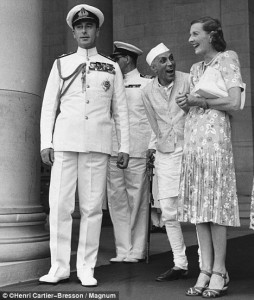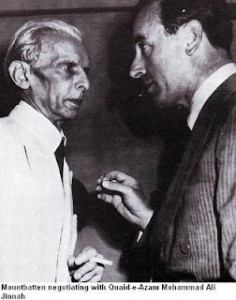Peace Watch » Editor's Take, Featured, Kashmir-Talk » Resolution Of Kashmir Dispute Lies In Its History
Resolution Of Kashmir Dispute Lies In Its History
Punchline
Narrative-History Symbiosis
Z. G. Muhammad
 Thanks to the social media, for it’s providing a platform for the people to express themselves- to those also who otherwise would not respond and react to newspaper writings and books. Some old-time friends do not like some contemporary blog writers and columnists including me for analyzing the current political situation in our land in its historical context. Some of them having a ‘status quoist’ mindset want writers, analysts, and political commentators to strip off the ‘master narrative’ of the land of its historical content. These folks have a right to their ideas. Nonetheless, they are on a wrong premise in stating that articulating the master narrative in its historical context is not ‘looking forward’ for the resolution of the “Kashmir Dispute” or the “Kashmir problem.”
Thanks to the social media, for it’s providing a platform for the people to express themselves- to those also who otherwise would not respond and react to newspaper writings and books. Some old-time friends do not like some contemporary blog writers and columnists including me for analyzing the current political situation in our land in its historical context. Some of them having a ‘status quoist’ mindset want writers, analysts, and political commentators to strip off the ‘master narrative’ of the land of its historical content. These folks have a right to their ideas. Nonetheless, they are on a wrong premise in stating that articulating the master narrative in its historical context is not ‘looking forward’ for the resolution of the “Kashmir Dispute” or the “Kashmir problem.”
From whatever prism you look at the ‘main narrative’ of the Kashmir problem/ issue/ dispute it cannot be delinked from the immediate history of the land. Looking at it, through the prism of Dr. Karan Singh’s “accession, not merger” theory. Or ‘ Abdullah clan’s, Article 370- Bridge Between India and Kashmir ” theory or the GOI “resolution under Shimla Agreement” theory, all these ‘dominant discourses’ also link the Kashmir Dispute to its immediate history. Even, ‘out of box solution,’ a trite phrase often taken as an escapist route by some ‘status quoist’ friends cannot be thought of in isolation of the history of the dispute. In fact, strengthen of the master narrative lies in its history. So, for finding a solution, even a so called ‘out of box’ one needs understanding the genesis of the dispute.
Historian, Tom C Holt has rightly argued, “History is fundamentally and inescapably narrative in its basic structure.” The theories articulated by erstwhile Maharaja’ s son, Abdullah scions, and other ‘status quoists’ are pegged to the birth of India and Pakistan as independent dominions and post- October 1947 developments. Most importantly these discourses revolve around the “instrument of accession,” its acceptance by Lord Mountbatten, the Governor General of the Dominion of India. Moreover, for the Government of India going to UN, Security Council with this document for subtly seeking approval of the comity of the nations for the document signed by Maharaja Hari Singh, it has gained centrality in the Kashmir narrative.
Interestingly the Instrument of Accession also cannot be delinked from 1846, “The Treaty of Amritsar.” The British had sold Kashmir to ancestors of the last Maharaja under this Treaty. On the litmus test of the history, the last Maharaja of the state ceases to hold any authority to sign any document deciding future of people of the state. The so-called “Treaty of Amritsar” signed at the back of the people hundreds of miles away from by two aliens had no moral and legal sanction. The people immediately revolted against it and never recognized this document. Out of contempt, from ab initio, the so-called treaty was denounced by people as “Amritsar Sale Deed.” In 1934, when Prem Nath Bazaz, informed M.K. Gandhi about eighty percent population having revolted against Hari Singh. Gandhi tersely replied “we are sowing as we have reaped. Seeing that Kashmir is predominantly Muslaman one day it is bound to become Muslaman State. A Hindu prince can, therefore, rule by not ruling, i.e., by allowing the Muslamans to do so.” Time and again, the contempt against the rule foisted by the British on Kashmir found its manifestations through agitations resonating with slogans “Down with Amritsar Treaty, Quit from our Kashmir.” In 1946, at the crucial moment, when India and Pakistan were born as independent countries the people full throat challenged the legitimacy of the Maharaja to decide about future of the State. 
The Maharaja, whose legitimacy had been challenged by the overwhelming majority including people in Poonch up in arms against his rule had no moral or legal authority to sign any document that decides their future. No international court of justice or international institution safeguarding right of people to determine their future could have accepted this document as valid or sacrosanct. New Delhi, knowing these hard realities, in accepting the conditional accession stated:
“In states where the issue of accession has been the subject of dispute, the question of accession, be decided in accordance wishes of the people of the state…..the question of accession should be settled by reference to the people’.
In stating this, it tacitly agreed that the fugitive Maharaja had no moral right to sign such a document. That is why Lord Mountbatten in the annexure to the Instrument of Accession wrote to Maharaja to invite Sheikh Abdullah, to form an Interim Government. It was also the stated position of the GOI before the international community. On 1 November 1947 in a meeting between Governor-Generals of India, Lord Mountbatten reiterating this position suggested holding of a plebiscite in the state under the aegis of the UN. Nehru further reiterated it on November 2, address to people of India. Dr. Karan Singh “accession, not merger” theory is based on these historical realities.
In 1948, when New Delhi approached the UN, it had built its case on principle; That it stood committed allowing people of the state to decide their future. The Security Council passed one after another resolution guaranteeing the right to self-determination to people of the State and provided a mechanism for holding the plebiscite. India and Pakistan accepted these resolutions. Thus made these binding on them. Till, the execution of the UN resolution, New Delhi created a temporary mechanism governing the stat through the Article 37o, which was supplemented by Article 35 A. The proceedings of the Constituent Assembly testify it, stating that Article 370, has to be there till Kashmir continues to be in the Unites Nations. So Abdullah scions, “Article 370- bridge” theory has no meaning if delinked from its genesis. In the same vein the Shimla Agreement in keeping with para 3, clause 2, continue to be tethered to the UN Resolutions on Kashmir.
So, it sounds naïve, when some friends start talking about the resolution of the Kashmir problem outside the history of the dispute. Or outside the realm of democracy, not realizing that even the ‘status quoist’ discourse roots in the history of the problem.
Published in Greater Kashmir on 9-01-2017 written on 7-01-2017
Filed under: Editor's Take, Featured, Kashmir-Talk







